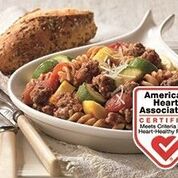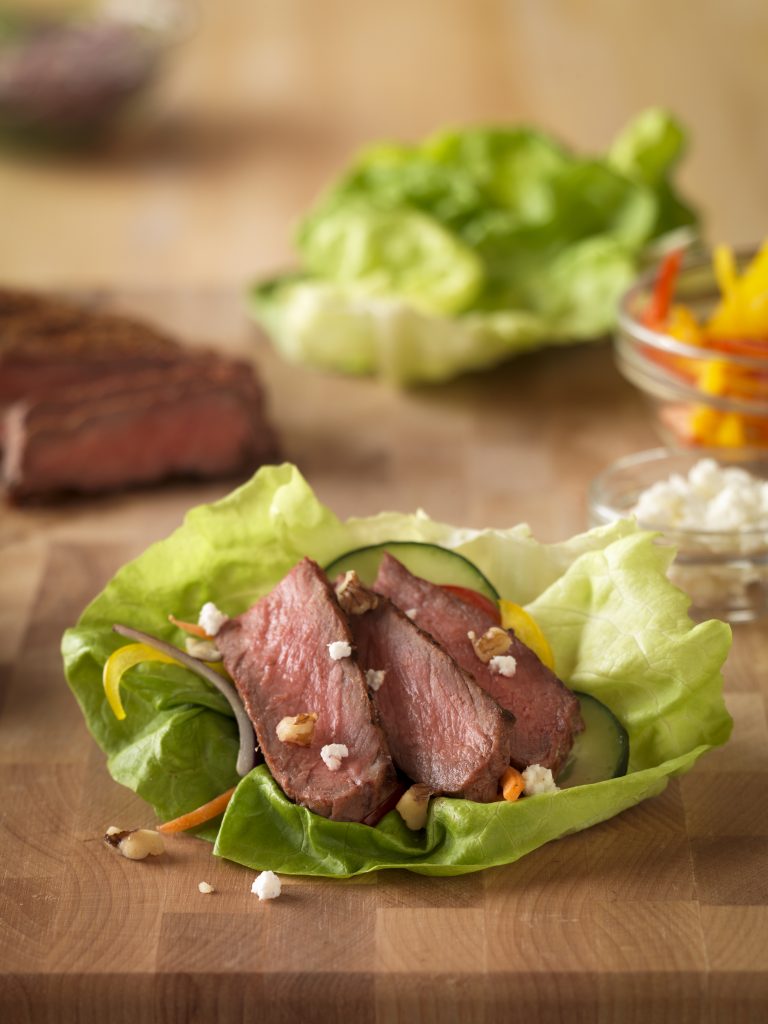I will be blogging this month about how you can incorporate beef into your healthy diet. These posts are sponsored by the Northeast Beef Promotion Initiative and the Pennsylvania Beef Council, but are expressions of my own.
My goal is to help you enjoy eating for better health. This sure doesn’t mean giving up the foods you love. My regular readers know I subscribe to a philosophy of “everything in moderation”. Yet many consumers are still confused about how “red meat” can fit into a healthy diet.
As co-author of two books that discuss diet and cardiovascular (heart) disease, I am well aware of the importance of a balanced diet. While I’m always striving to encourage you to add more fruits and vegetables, lean meats fit onto the plate too. It’s all about balance. The National Heart, Lung and Blood Institute’s DASH Diet guidelines recommend that 27% of your calories come from fat, with only 6% of those calories as saturated fat.
Low in saturated fat, a 3 ounce portion of lean beef provides only 17-19% of your daily fat allowance, so it can easily fit into that guideline. It’s important to know your cuts of beef, and incorporate lean cuts into your diet most often.
Improvements to Nutrition Profile
 According to the beef checkoff, the past four decades have seen an estimated 44% reduction in available total fat, and a 29% reduction in saturated fat per capita, contributed by beef. This was a result of the changes in cattle breeding and management, and trimming practices, by processors, retailers and foodservice operators.
According to the beef checkoff, the past four decades have seen an estimated 44% reduction in available total fat, and a 29% reduction in saturated fat per capita, contributed by beef. This was a result of the changes in cattle breeding and management, and trimming practices, by processors, retailers and foodservice operators.
As part of my National Nutrition Month® blogging this month, I am going to share some facts with you each week about today’s beef so that you can “Put Your Best Fork Forward®”!
Labeling Lingo
When grocery shopping, it’s always a good idea to check labels and the Nutrition Facts panel.
Here are a few terms to look for when shopping for beef:
- Lean beef is less than 10 grams of total fat, 4.5 grams or less of saturated fat and less than 95 milligrams of cholesterol, per 3.5 ounces.
- Extra Lean Beef is less than 5 grams total fat, less than 2 grams saturated fat and less than 95 milligrams of cholesterol per 3.5 ounces.
 Look for these cuts:
Look for these cuts:
- Extra Lean ground beef (96%, 4%)
- Bottom Round Steak (select grade)
- Sirloin Steak
- Sirloin Tip (select grade)
- Top Sirloin Petite Roast Boneless (select grade)
- Top Sirloin Steak, boneless center cut
I realize however, that budgets are important too. Don’t fret if you pick up a package of beef that is a bit higher in fat. You can make adjustments in the way you cook it, and in the portion, as well as how you balance out the whole meal with vegetables and grains. Or, perhaps your family really enjoys a chuck roast or a T-bone steak? Enjoy those for special occasions, and use the lean cuts guide to gauge weekly shopping choices.
Going Against the Grain
Some leaner cuts of beef may be tough if you don’t prepare them properly. Cuts such as bottom round steak or sirloin tip, can be marinated to improve tenderness. How you cut the steak or roast can also impact tenderness. You may have heard the advice to “cut against the grain”. What does that mean? Well, the “grain” refers to the bundles of long muscle fibers that are parallel to one another. When you slice these steaks, you want to slice perpendicular to those grain lines (not parallel with them). This cuts through the muscle fibers, and offers you much more tender, delicious bites.
I hope I’ve given you some food for thought about choosing healthy beef cuts. Next week, I’ll cover the protein power of beef.




